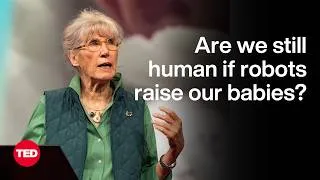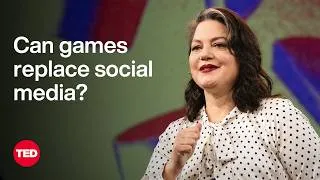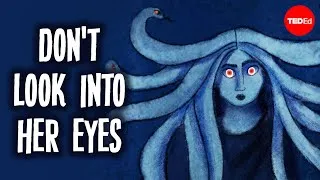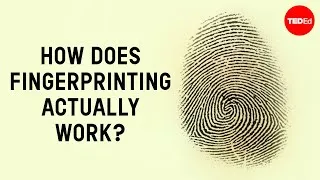请双击下面的英文字幕来播放视频。
翻译人员:
校对人员: Carol Wang
00:07
As the space telescope prepares
to snap a photo,
0
7954
3500
当太空望远镜准备拍照时,
00:11
the light of the nearby
star blocks its view.
1
11454
2917
附近恒星的光线挡住了视线。
00:14
But the telescope
has a trick up its sleeve:
2
14996
2750
但望远镜自有妙招:
00:17
a massive shield to block the glare.
3
17746
3333
用一个巨大遮星板来遮挡眩光。
00:21
This starshade has a diameter
of about 35 meters—
4
21079
4625
这个遮星板直径大约 35 米——
00:25
that folds down to just under 2.5 meters,
5
25704
3667
折叠起来则不到 2.5 米,
00:29
small enough to carry
on the end of a rocket.
6
29371
3083
小到可以放在火箭的末端。
00:32
Its compact design is based
on an ancient art form.
7
32454
5000
其紧凑设计基于一种古老艺术形式:
00:37
Origami, which literally translates
to “folding paper,”
8
37454
5042
折纸,字面意思是折叠纸张,
00:42
is a Japanese practice dating back
to at least the 17th century.
9
42496
4583
是至少可以追溯到
十七世纪日本的一种做法。
00:47
In origami, the same simple concepts
10
47079
2375
在折纸中,同样简单的概念
可以折成任何的东西:
00:49
yield everything from a paper crane
with about 20 steps,
11
49454
4000
从只需 20 个步骤的纸鹤
到需要 1,000 个步骤的纸龙,
00:53
to this dragon with over 1,000 steps,
to a starshade.
12
53454
5167
甚至可以做成遮星板。
00:58
A single, traditionally square sheet
of paper
13
58621
2791
一张传统的方形纸,
01:01
can be transformed into almost
any shape, purely by folding.
14
61412
4459
仅仅通过折叠,就可以
变成任何的形状。
01:05
Unfold that sheet,
and there’s a pattern of lines,
15
65871
3250
展开那张纸,可以看到线条图案,
01:09
each of which represents a concave
valley fold or a convex mountain fold.
16
69121
6833
每条线代表一个凹谷褶皱
或者一个凸山褶皱。
01:15
Origami artists arrange these folds
to create crease patterns,
17
75954
4709
折纸艺术家通过折叠去创造折痕,
01:20
which serve as blueprints
for their designs.
18
80663
2875
来作为他们设计的蓝图。
01:23
Though most origami models
are three dimensional,
19
83579
2750
虽然大多数折纸模型都是三维的,
01:26
their crease patterns are usually designed
to fold flat
20
86329
3459
折痕图案通常设计为平折,
01:29
without introducing any new creases
or cutting the paper.
21
89788
4166
不会引入任何新折痕或切割纸张。
01:33
The mathematical rules behind
flat-foldable crease patterns
22
93954
4000
平折折痕背后的数学规则
01:37
are much simpler than those behind
3D crease patterns—
23
97954
4209
比 3D 折痕图案
背后的规则要简单的多——
01:42
it’s easier to create an abstract 2D
design and then shape it into a 3D form.
24
102163
5875
先创造抽象的 2D 设计,
再塑造成 3D 会更加简单。
01:48
There are four rules that any
flat-foldable crease pattern must obey.
25
108954
4542
任何平折的折痕图案
都必须遵守四个规则:
01:54
First, the crease pattern
must be two-colorable—
26
114246
3542
首先,折痕的图案必须可涂双色——
01:57
meaning the areas between creases
can be filled with two colors
27
117788
4208
即折痕间的区域可用两种颜色填充,
02:01
so that areas of the same
color never touch.
28
121996
3417
使相同颜色的区域永远不会接触。
02:05
Add another crease here,
29
125413
1833
在此处添加另一个折痕,
02:07
and the crease pattern no longer
displays two-colorability.
30
127246
3958
折痕图不再显示两种可着色性。
02:11
Second, the number
of mountain and valley folds
31
131871
2833
第二条,山和沟褶皱的数量
02:14
at any interior vertex
must differ by exactly two—
32
134704
4792
在任何内部顶点必须差恰好两个——
02:19
like the three valley folds
and one mountain fold that meet here.
33
139496
4833
就像这里交汇的
三谷褶皱和一山褶皱一样。
02:24
Here’s a closer look at what happens
when we make the folds at this vertex.
34
144329
4875
下面仔细看看在这个顶点
进行折叠时会发生什么:
02:29
If we add a mountain fold at this vertex,
there are three valleys and two mountains.
35
149204
5584
如果在这个顶点添加一个山褶,
就有三个山谷和两个山;
02:34
If it’s a valley, there are four valleys
and one mountain.
36
154788
3541
如果是谷,则有四谷一山。
02:39
Either way, the model doesn't fall flat.
37
159121
3208
无论哪种方式,模型都不会平坦。
02:42
The third rule is that if we number
all the angles
38
162913
3166
第三条规则是,如果我们对
内部顶点处所有角进行编号,
02:46
at an interior vertex moving
clockwise or counterclockwise,
39
166079
3917
顺时针或逆时针标注均可,
02:49
the even-numbered angles must
add up to 180 degrees,
40
169996
5458
偶数角加起来必须是 180 度,
02:55
as must the odd-numbered angles.
41
175454
2792
奇数角也必须如此。
02:58
Looking closer at the folds,
we can see why.
42
178246
3292
仔细观察褶皱,可以看出原因。
03:02
If we add a crease and number
the new angles at this vertex,
43
182288
4208
如果在这个顶点添加
一个折痕并给新的角编号,
03:06
the even and odd angles no longer
add up to 180 degrees,
44
186496
5042
偶数和奇数角度加起来
不再是 180 度,
03:11
and the model doesn’t fold flat.
45
191538
2500
并且模型不会折叠平。
03:14
Finally,
a layer cannot penetrate a fold.
46
194038
3791
最后,一层纸不能穿过褶皱。
03:18
A 2D, flat-foldable base is often
an abstract representation
47
198663
4541
一个可折叠 2D 平面底座,
03:23
of a final 3D shape.
48
203204
2167
通常是最终 3D 形状的抽象表示。
03:25
Understanding the relationship
between crease patterns, 2D bases,
49
205829
4750
了解折痕图案、2D 基座
03:30
and the final 3D form
allows origami artists
50
210579
4084
和最终 3D 形式的关系,
令折纸艺术家设计出
极其复杂的形状。
03:34
to design incredibly complex shapes.
51
214663
3333
03:37
Take this crease pattern
by origami artist Robert J. Lang.
52
217996
3958
以折纸艺术家 Robert J. Lang 的
折痕图案为例,
03:41
The crease pattern allocates areas
for a creature's legs,
53
221954
3375
通过折痕图案分配区域,
03:45
tail, and other appendages.
54
225329
2500
分出动物的腿、尾巴和其他部位。
03:47
When we fold the crease pattern
into this flat base,
55
227829
3167
当我们将折痕图案
折叠到这个平坦底座上时,
03:50
each of these allocated areas
becomes a separate flap.
56
230996
4125
这些分好的区域中的每一个
都成为一个单独的襟翼。
03:55
By narrowing, bending, and sculpting
these flaps,
57
235121
3125
通过缩小、弯曲和塑性这些襟翼,
03:58
the 2D base becomes a 3D scorpion.
58
238246
3917
2D 基底变成了 3D 蝎子。
04:02
Now, what if we wanted to fold 7 of these
flowers from the same sheet of paper?
59
242913
5458
现在,如果我们想在同一张纸上
折叠 7 朵花怎么办?
04:08
If we can duplicate
the flower’s crease pattern
60
248371
2542
如果我们可以复制
花朵的折痕图案
04:10
and connect each of them in such a way
that all four laws are satisfied,
61
250913
4958
并以满足所有四个定律的方式
连接它们中的每一个,
04:15
we can create a tessellation,
or a repeating pattern of shapes
62
255871
4042
就可以创建一个镶嵌或形状重复,
04:19
that covers a plane
without any gaps or overlaps.
63
259913
3875
覆盖一个平面,
没有任何间隙或重叠。
04:23
The ability to fold a large surface
into a compact shape
64
263788
3958
将大表面折叠成紧凑形状的能力,
04:27
has applications
from the vastness of space
65
267746
2792
在广阔的空间
04:30
to the microscopic world of our cells.
66
270538
3291
和我们细胞的微观世界中都有应用。
04:33
Using principles of origami,
67
273829
2084
运用折纸原理,
04:35
medical engineers have re-imagined
the traditional stent graft,
68
275913
4291
医学工程师重新构想了
传统的覆膜支架,
04:40
a tube used to open and support
damaged blood vessels.
69
280204
3709
即一个用于打开
和支撑受损血管的管子——
04:43
Through tessellation, the rigid tubular
structure folds into a compact sheet
70
283913
5083
通过镶嵌,刚性管状结构
折叠成紧凑的薄片,
04:48
about half its expanded size.
71
288996
2708
体积约是展开后的一半。
04:51
Origami principles have been used
in airbags, solar arrays,
72
291704
4584
折纸原理已用于
安全气囊、太阳能电池板、
04:56
self-folding robots,
and even DNA nanostructures—
73
296288
4750
自折叠机器人,
甚至 DNA 纳米结构——
05:01
who knows what possibilities
will unfold next.
74
301038
4000
谁知道接下来会出现什么可能性。
New videos
关于本网站
这个网站将向你介绍对学习英语有用的YouTube视频。你将看到来自世界各地的一流教师教授的英语课程。双击每个视频页面上显示的英文字幕,即可从那里播放视频。字幕会随着视频的播放而同步滚动。如果你有任何意见或要求,请使用此联系表与我们联系。







